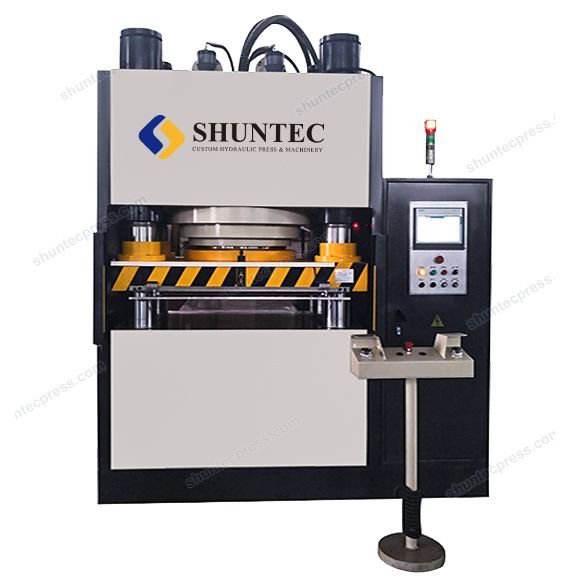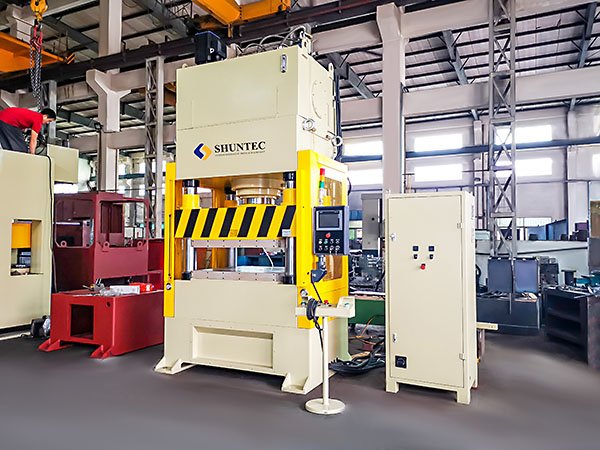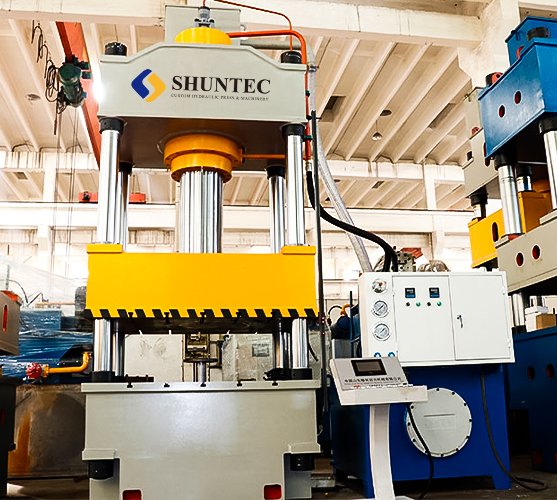In the manufacturing and metal forming industry, one of the most valuable and versatile machines is the power press. This machine is essential for cutting, pressing, bending, and forming various types of metal objects. However, like any other piece of equipment, the power press has its advantages and drawbacks. This article explores these points in depth to offer a comprehensive view of the machine's pros and cons.



The Purpose of a Power Press
A power press is a machine used in the manufacturing industry to bend, cut, and form metal plates into different shapes and sizes. It operates under the principle of pressure and force, utilizing mechanical or hydraulic power to achieve the desired outcome.
The machine's purpose extends beyond basic manufacturing processes. It plays a crucial role in a range of industries, including automotive, construction, and aerospace. Power presses are often used in the production of household appliances, vehicle parts, and even intricate components of large machinery. They are indispensable in operations that require mass production of similar components, which ensures uniformity and consistency of products.
Advantages of a Power Press
The utility of a power press extends far beyond its basic functionality. It offers several advantages that make it an attractive investment for many businesses.
Efficiency and Speed
Power presses are highly efficient, capable of producing large quantities of components within a short period. This efficiency translates to increased productivity and improved bottom lines, making them an ideal solution for businesses seeking to maximize output.
Precision and Consistency
These machines can produce products with a high degree of precision. Power presses ensure that each component is made to exact specifications, reducing waste and ensuring consistent quality. This precision is essential in industries like aerospace and automotive, where even the smallest deviation can lead to significant problems.
Versatility
Power presses can handle a wide variety of materials and product applications. They can work with different types of metal, including steel, aluminum, and copper. Furthermore, they can produce a range of shapes and sizes, making them suitable for various industries.
Cost-effectiveness
Despite the high initial cost, power presses can be highly cost-effective in the long run. Their high-speed operation and large production capacity mean they can quickly recover initial investment costs. Moreover, their ability to produce components with minimal waste reduces material costs, adding to their economic viability.

Disadvantages of Press Working
While press working offers several benefits, it also comes with a few drawbacks that should be taken into consideration.
Requirement for Skilled Operators
Press working machines, including power presses, require trained operators to function correctly. The need for skilled operators can increase the operational cost of these machines, and finding qualified personnel can be a challenge in some areas.
Potential Safety Hazards
Power presses, due to their operating principle, can pose significant safety risks. Mishandling can lead to severe injuries, or worse, fatal accidents. Therefore, proper safety measures and training are necessary, which adds to the overall cost of operation.
High Initial Investment
Although power presses can be cost-effective in the long run, they require a substantial initial investment. This can be a barrier for small businesses or startups with limited capital.
Disadvantages of Press Machines
When it comes to the broader category of press machines, there are a few additional drawbacks that potential users should be aware of.
Limitations in Complexity of Parts
Press machines are designed to handle specific tasks and shapes. They may not be able to handle complex geometries or intricate parts, limiting their versatility in some applications.
Maintenance and Repair Challenges
Maintenance and repair of press machines can be costly and time-consuming. Due to the intense pressure and force these machines operate under, they are prone to wear and tear. Regular maintenance is necessary to keep them running efficiently, which can add to the overall operating cost.
Energy Consumption
Press machines, particularly those operating on mechanical power, consume substantial amounts of energy. This not only increases operating costs but can also have significant environmental impacts, particularly in regions where electricity is primarily sourced from fossil fuels.

Disadvantages of Mechanical Power
While mechanical power is incredibly useful, it's not without its drawbacks. These are some of the most significant disadvantages associated with mechanical power.
Sustainability Concerns
The use of mechanical power, particularly when it is sourced from non-renewable resources, can raise sustainability concerns. With the growing emphasis on green manufacturing and sustainable practices, this can pose a challenge.
Limited Efficiency
Mechanical systems, including power presses, have a limited efficiency. Some energy is always lost as heat due to friction, which means not all input energy is converted into useful work.
Risk of Mechanical Failure
Mechanical systems are prone to wear and tear, leading to the risk of mechanical failure. This can result in costly repairs and unexpected downtime, affecting the overall productivity of a business.
Conclusion
Power presses, like any other machine, come with their own set of advantages and disadvantages. They offer remarkable efficiency, precision, and versatility, making them a crucial asset in various industries. However, potential users must be aware of their limitations, including the need for skilled operators, safety concerns, high initial costs, and maintenance challenges.
In addition, the broader implications of mechanical power, such as sustainability concerns, limited efficiency, and the risk of mechanical failure, should not be overlooked. It's crucial for manufacturers to consider these factors when deciding whether to invest in power press technology.
As we move into a future where sustainability and efficiency are increasingly important, the potential drawbacks of power press technology and mechanical power, in general, will need to be addressed. Only then can we continue to reap the benefits of this technology while mitigating its potential downsides.
In the end, the decision to use power presses should be a balanced one, considering both the pros and cons, and aligning with the specific needs and resources of the business.



